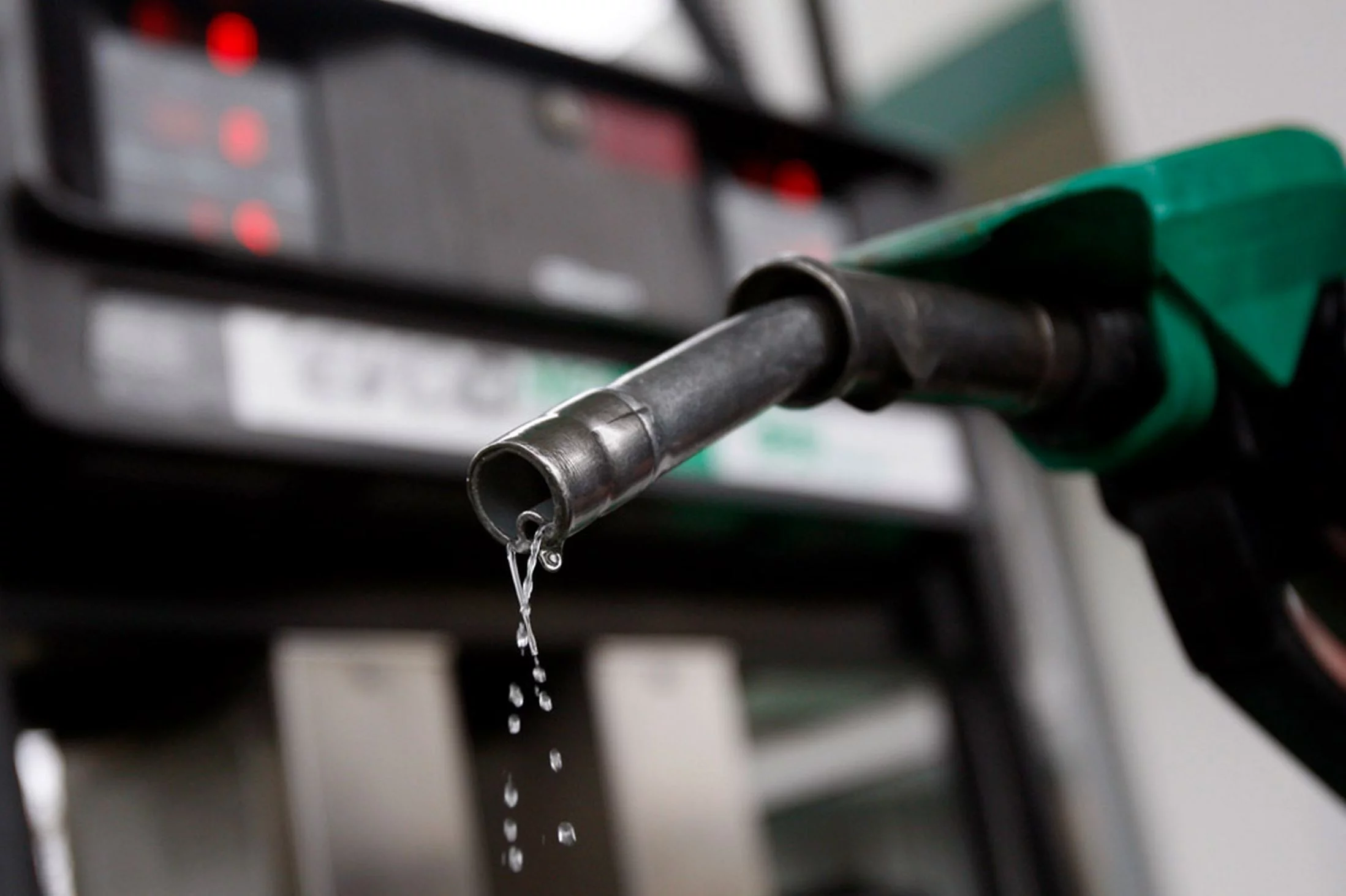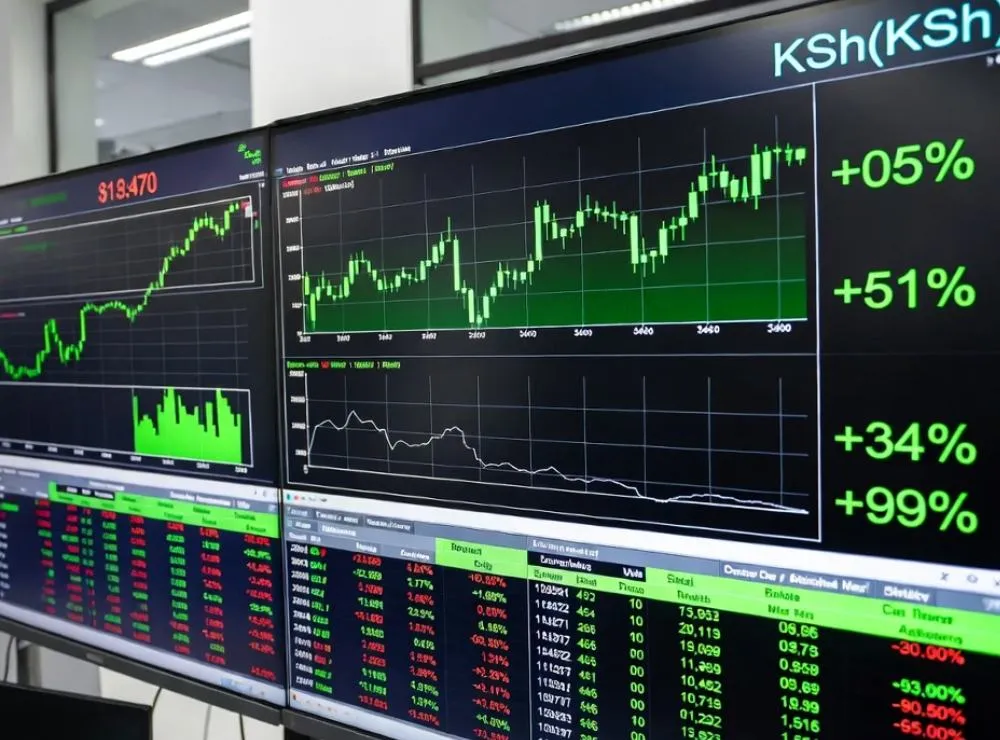Fuel prices have seen a marginal decrease for the period of September 15 to October 14, 2025, according to a recent announcement by the Energy & Petroleum Regulatory Authority (EPRA). This marks the second consecutive month of fuel price reductions, providing modest relief to consumers who have endured significant economic pressures throughout 2025.
One decision can change your entire career. Take that step with our Online courses in ACCA, HESI A2, ATI TEAS 7, HESI EXIT, NCLEX-RN, NCLEX-PN, and Financial Literacy. Join Serrari Ed and start building your brighter future today.
Breaking Down the Latest Price Adjustments
The latest review shows encouraging trends across all major fuel categories:
- Super Petrol prices have dropped by KShs. 0.79 per litre
- Diesel decreased by KShs. 0.11 per litre
- Kerosene fell by KShs. 0.80 per litre
The move, which is expected to offer a slight reprieve to consumers, results from a decline in the landed costs of imported petroleum products. In August 2025, the average exchange rate against the U.S. dollar was KShs. 129.62 per USD, which helped mitigate the cost of imports and contributed to the downward pressure on retail prices.
Understanding the Price Dynamics
The EPRA attributed the price reduction to several key factors that demonstrate the complex interplay of global and local economic forces affecting Kenya’s fuel market:
Landing Cost Analysis
The average landed cost of Super Petrol decreased by 0.46%, from $623.71 per cubic metre in July to $620.84 in August 2025. Diesel costs experienced a more significant decline, falling by 3.38% from $635.58 to $614.08 per cubic metre, while Kerosene decreased by 2.93% from $628.02 to $609.59 per cubic metre over the same period.
These reductions in landing costs directly translate to lower pump prices, as Kenya imports all of its refined petroleum products and benchmarks local prices against international market trends. The pricing methodology follows EPRA’s official pump price formulae, which incorporates various cost components including transportation, storage, and regulatory margins.
Exchange Rate Stability
The relative stability of the Kenyan shilling against the U.S. dollar during August played a crucial role in keeping import costs manageable. This stability contrasted sharply with earlier periods in 2025 when currency volatility significantly impacted fuel prices.
Regional Price Variations
The new prices vary across different regions due to logistical and transportation costs, reflecting Kenya’s geographic and infrastructure realities:
Nairobi Pricing (Capital City)
In Nairobi, the commercial hub, fuel will retail at:
- Super Petrol: KShs. 184.52 per litre
- Diesel: KShs. 171.47 per litre
- Kerosene: KShs. 154.78 per litre
Coastal and Remote Area Pricing
In the port city of Mombasa, prices are slightly lower due to proximity to import facilities, while remote towns like Mandera have the highest prices due to additional transportation costs and logistical challenges in fuel distribution across Kenya’s vast territory.
Context: Recent Fuel Price Volatility
This marginal decrease comes as welcome news following a turbulent period earlier in 2025 when fuel prices hit record highs. In January 2025, Kenyans experienced one of the steepest fuel price increases in recent years, with Super Petrol surging by KSh 16.96 to KSh 211.64 per litre, while Diesel increased by KSh 21.32 to KSh 201.00 per litre.
Historical Price Trends
The current gasoline price in Kenya stands at approximately $1.42-$1.43 per liter, compared to a global average of $1.21 per liter. This pricing reflects Kenya’s position as a net importer of refined petroleum products and the various taxes and levies that comprise the final pump price.
The average gasoline price from September 2015 to September 2025 was KES 134.00 per liter, with a minimum of KES 82.75 in April 2016 and a maximum of KES 219.07 in October 2023, highlighting the significant volatility that has characterized Kenya’s fuel market.
Economic Impact and Consumer Relief
Transportation Sector Response
The marginal price reduction is expected to provide some relief to Kenya’s transportation sector, which has been under significant pressure. Kenya’s inflation rate increased to 4.5% in August 2025 from 4.1% in July, with transport costs surging 4.4% year-on-year according to the Kenya National Bureau of Statistics (KNBS).
Despite the recent fuel price decreases, passenger transport costs have continued to rise, with matatu fares for routes like Mombasa to Nairobi increasing from KSh 1,300 to KSh 1,500, reflecting the delayed transmission of fuel cost benefits to end consumers.
Household Budget Impact
For ordinary Kenyan households, these price reductions offer modest relief but come against a backdrop of broader economic challenges. Kenya’s cost of living increased in July 2025 due to rising prices of essential commodities including sugar, flour (unga), and fuel, contributing to an overall inflation rate of 4.1%.
The reduction in kerosene prices is particularly significant for low-income households that rely on this fuel for cooking and lighting, offering some respite from energy costs that consume a substantial portion of their monthly budgets.
Build the future you deserve. Get started with our top-tier Online courses: ACCA, HESI A2, ATI TEAS 7, HESI EXIT, NCLEX-RN, NCLEX-PN, and Financial Literacy. Let Serrari Ed guide your path to success. Enroll today.
Global Oil Market Dynamics
The price adjustments occur against a complex global backdrop. According to the Central Bank of Kenya’s weekly bulletin, global oil prices had edged higher in early September, with a 2.5% increase in the price per barrel of Murban crude, primarily driven by potential supply disruptions stemming from geopolitical tensions in the Middle East.
Current global oil market dynamics show that world oil supply increased to a record 106.9 mb/d in August as OPEC+ continues unwinding output cuts, while global oil demand is forecast to increase by only 740 kb/d in 2025, according to the International Energy Agency (IEA).
Geopolitical Influences
The CBK noted that “International oil prices rose, reflecting potential supply disruptions from the conflict in the Middle East and the war in Ukraine, even as concerns over weakening US demand and an expected oversupply from planned output increases by OPEC+ countries remain.”
This dynamic illustrates the challenging environment in which Kenya’s fuel pricing operates, where local consumers are exposed to global geopolitical risks despite the country’s geographic distance from conflict zones. Current oil prices at $63.11 per barrel remain volatile due to these geopolitical tensions.
Government-to-Government Fuel Deal Context
Kenya’s fuel pricing mechanism operates within the framework of a controversial Government-to-Government (G2G) deal with Gulf oil companies. Saudi Aramco, Abu Dhabi National Oil Company (ADNOC), and Emirates National Oil Company have been supplying Kenya with refined petroleum products since April 2023.
Deal Structure and Challenges
The G2G arrangement, initially introduced to ease pressure on foreign exchange markets, provides Kenya with a 180-day credit window for payments. However, the deal has faced criticism for creating distortions in the foreign exchange market.
Energy Cabinet Secretary Opiyo Wandayi previously cautioned that while the G2G deal cushions Kenya against supply shortages, escalating geopolitical tensions could still affect local prices through increases in Free on Board costs that impact global markets.
Fixed Premium Concerns
One significant challenge with the current G2G arrangement is the fixed premium structure, which prevents Kenyan consumers from benefiting fully when global refined fuel prices decline. This has meant that some international price reductions don’t translate proportionally to local pump price relief.
Regulatory Framework and Pricing Methodology
EPRA’s monthly price reviews operate under Section 101(y) of the Petroleum Act 2019 and Legal Notice No. 192 of 2022, which provides the regulatory framework for determining maximum retail prices of petroleum products.
Price Components
The retail fuel prices include several components:
- Base landed cost of imported petroleum products
- 16% Value Added Tax (VAT) as provided under the Finance Act 2023
- Inflation-adjusted excise duties per Legal Notice No. 194 of 2020
- Transportation and distribution margins that vary by location
- Retail margins for fuel station operators
Monthly Review Process
EPRA conducts these reviews monthly, analyzing global crude oil prices, exchange rates, landed costs, and various tax components to determine maximum allowable pump prices. This system aims to ensure that price adjustments reflect market realities while protecting consumers from excessive pricing. The complete methodology is detailed in EPRA’s pump price formulae documentation.
Economic Implications and Future Outlook
Inflation Dynamics
Fuel prices play a significant role in Kenya’s inflation calculations, as the country relies heavily on diesel for transportation, power generation, and agriculture, while kerosene remains important for many households’ cooking and lighting needs.
The marginal price reduction may help moderate inflationary pressures, though food and non-alcoholic beverages continue to drive inflation higher, rising 8.3% year-on-year in August 2025. The Central Bank of Kenya tracks inflation rates as part of its monetary policy framework.
Supply Chain Effects
Lower diesel prices particularly benefit Kenya’s logistics and transportation sectors, potentially reducing the cost of moving goods across the country. This could have positive downstream effects on the prices of essential commodities, though the impact may take time to materialize fully.
Business and Industrial Impact
For businesses, especially those in manufacturing and logistics, even marginal fuel cost reductions can translate to meaningful savings when scaled across large operations. This could help improve business competitiveness and potentially support job creation in fuel-intensive sectors.
Looking Ahead: Challenges and Opportunities
Exchange Rate Vulnerability
Kenya’s continued reliance on imported petroleum products means that fuel prices remain vulnerable to exchange rate fluctuations. Any significant weakening of the shilling against the dollar could quickly erode the current price gains.
Global Market Risks
Ongoing geopolitical tensions in the Middle East and Eastern Europe continue to pose risks to global oil supply chains. Kenya’s energy security remains tied to these global dynamics, making price stability challenging to achieve. OPEC+ production decisions and global oil market forecasts from the IEA suggest continued volatility ahead.
Energy Transition Considerations
The government’s broader energy strategy includes increasing renewable energy adoption and potentially exploring local refining capabilities to reduce import dependence. However, these longer-term solutions require substantial investment and time to implement.
Consumer Advice and Market Outlook
Budget Planning
While the current price reductions provide relief, consumers and businesses are advised to continue prudent fuel budget planning, given the inherent volatility in global oil markets and exchange rate fluctuations.
Alternative Energy Options
The price volatility in fossil fuels continues to highlight the importance of alternative energy sources for both individual households and businesses. Investment in solar, biogas, and other renewable technologies may provide long-term cost stability.
Conclusion
EPRA’s latest fuel price review offers modest but welcome relief to Kenyan consumers, marking the second consecutive month of price reductions. While the decreases are marginal, they signal positive trends in landing costs and exchange rate stability that could benefit the broader economy.
However, the complex interplay of global oil markets, geopolitical tensions, and local economic dynamics means that fuel price stability remains elusive. The ongoing G2G arrangement with Gulf suppliers provides supply security but with fixed premium structures that limit the full transmission of global price benefits to consumers.
As Kenya continues to navigate these challenging energy market dynamics, the latest price review provides a brief respite while highlighting the need for longer-term energy security strategies that reduce dependence on volatile global markets. For now, consumers can enjoy marginally lower fuel costs, though vigilance regarding future price movements remains essential given the numerous factors that influence Kenya’s energy costs.
Ready to take your career to the next level? Join our Online courses: ACCA, HESI A2, ATI TEAS 7 , HESI EXIT , NCLEX – RN and NCLEX – PN, Financial Literacy!🌟 Dive into a world of opportunities and empower yourself for success. Explore more at Serrari Ed and start your exciting journey today! ✨
Track GDP, Inflation and Central Bank rates for top African markets with Serrari’s comparator tool.
See today’s Treasury bonds and Money market funds movement across financial service providers in Kenya, using Serrari’s comparator tools.
Photo source: Google
By: Montel Kamau
Serrari Financial Analyst
15th September, 2025
Article, Financial and News Disclaimer
The Value of a Financial Advisor
While this article offers valuable insights, it is essential to recognize that personal finance can be highly complex and unique to each individual. A financial advisor provides professional expertise and personalized guidance to help you make well-informed decisions tailored to your specific circumstances and goals.
Beyond offering knowledge, a financial advisor serves as a trusted partner to help you stay disciplined, avoid common pitfalls, and remain focused on your long-term objectives. Their perspective and experience can complement your own efforts, enhancing your financial well-being and ensuring a more confident approach to managing your finances.
Disclaimer: This article is for informational purposes only and does not constitute financial advice. Readers are encouraged to consult a licensed financial advisor to obtain guidance specific to their financial situation.
Article and News Disclaimer
The information provided on www.serrarigroup.com is for general informational purposes only. While we strive to keep the information up to date and accurate, we make no representations or warranties of any kind, express or implied, about the completeness, accuracy, reliability, suitability, or availability with respect to the website or the information, products, services, or related graphics contained on the website for any purpose. Any reliance you place on such information is therefore strictly at your own risk.
www.serrarigroup.com is not responsible for any errors or omissions, or for the results obtained from the use of this information. All information on the website is provided on an as-is basis, with no guarantee of completeness, accuracy, timeliness, or of the results obtained from the use of this information, and without warranty of any kind, express or implied, including but not limited to warranties of performance, merchantability, and fitness for a particular purpose.
In no event will www.serrarigroup.com be liable to you or anyone else for any decision made or action taken in reliance on the information provided on the website or for any consequential, special, or similar damages, even if advised of the possibility of such damages.
The articles, news, and information presented on www.serrarigroup.com reflect the opinions of the respective authors and contributors and do not necessarily represent the views of the website or its management. Any views or opinions expressed are solely those of the individual authors and do not represent the website's views or opinions as a whole.
The content on www.serrarigroup.com may include links to external websites, which are provided for convenience and informational purposes only. We have no control over the nature, content, and availability of those sites. The inclusion of any links does not necessarily imply a recommendation or endorsement of the views expressed within them.
Every effort is made to keep the website up and running smoothly. However, www.serrarigroup.com takes no responsibility for, and will not be liable for, the website being temporarily unavailable due to technical issues beyond our control.
Please note that laws, regulations, and information can change rapidly, and we advise you to conduct further research and seek professional advice when necessary.
By using www.serrarigroup.com, you agree to this disclaimer and its terms. If you do not agree with this disclaimer, please do not use the website.
www.serrarigroup.com, reserves the right to update, modify, or remove any part of this disclaimer without prior notice. It is your responsibility to review this disclaimer periodically for changes.
Serrari Group 2025
















